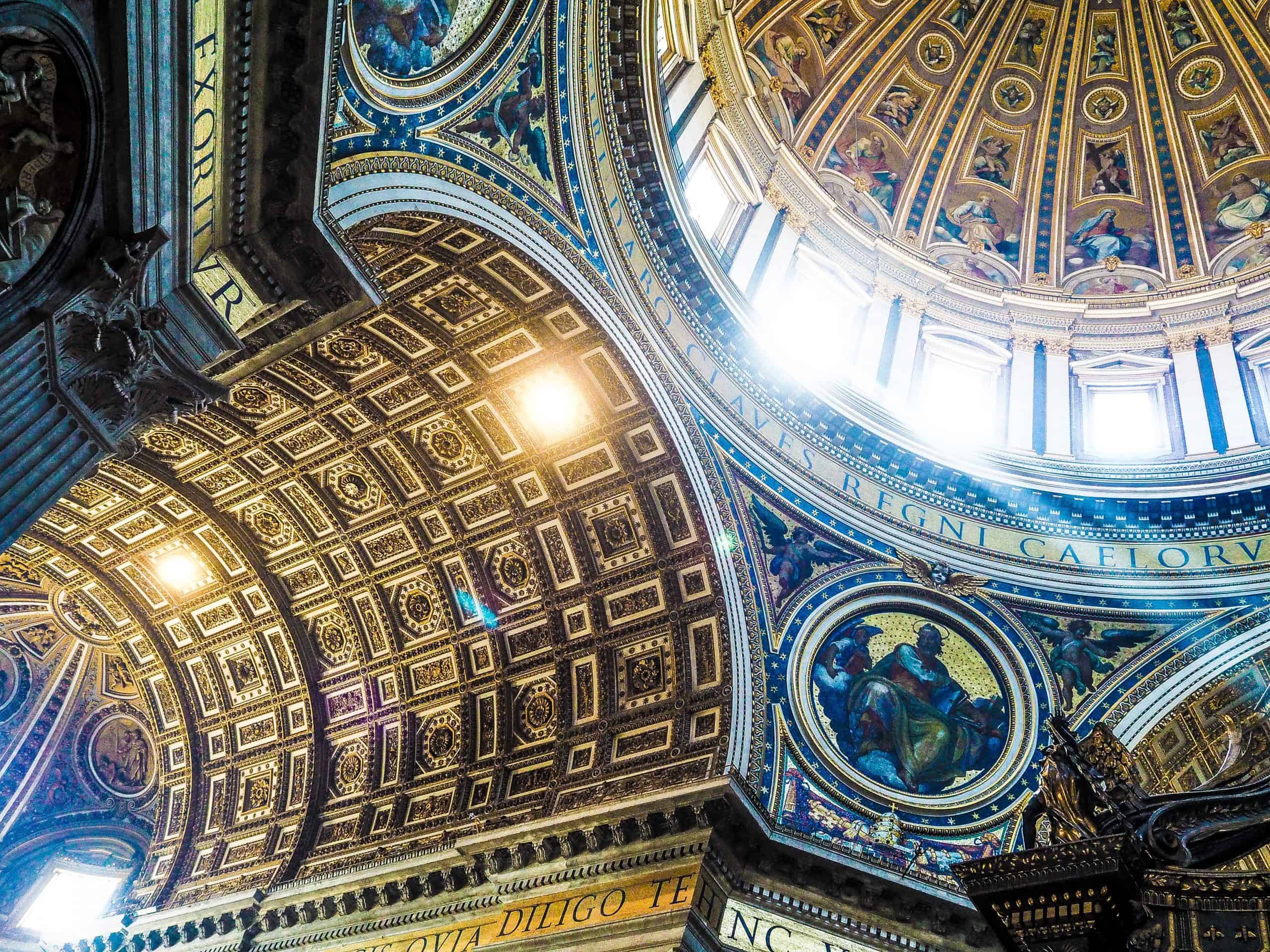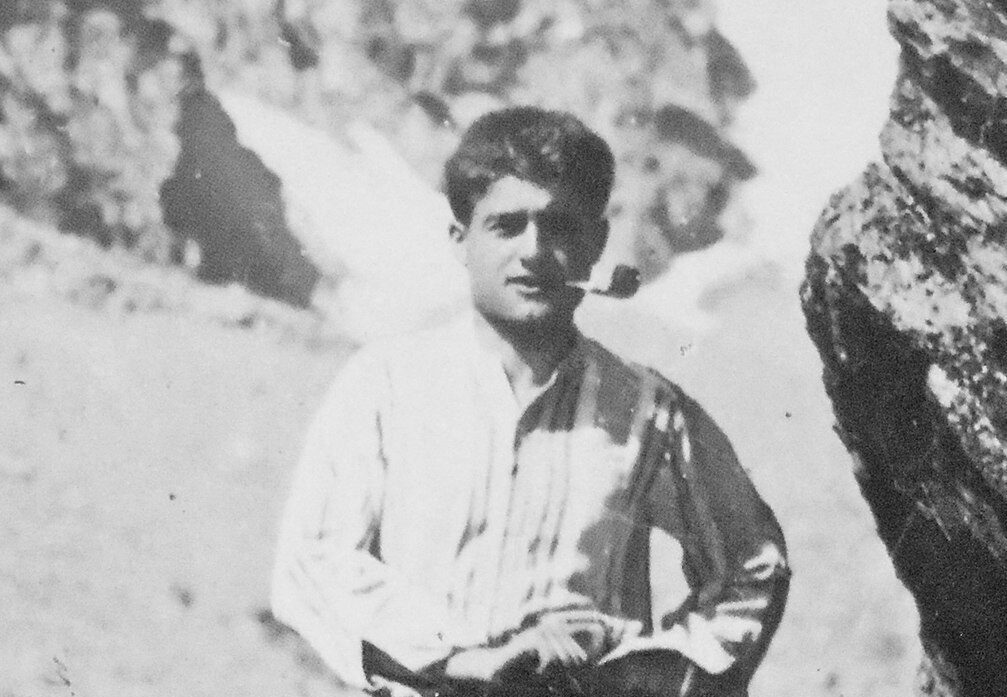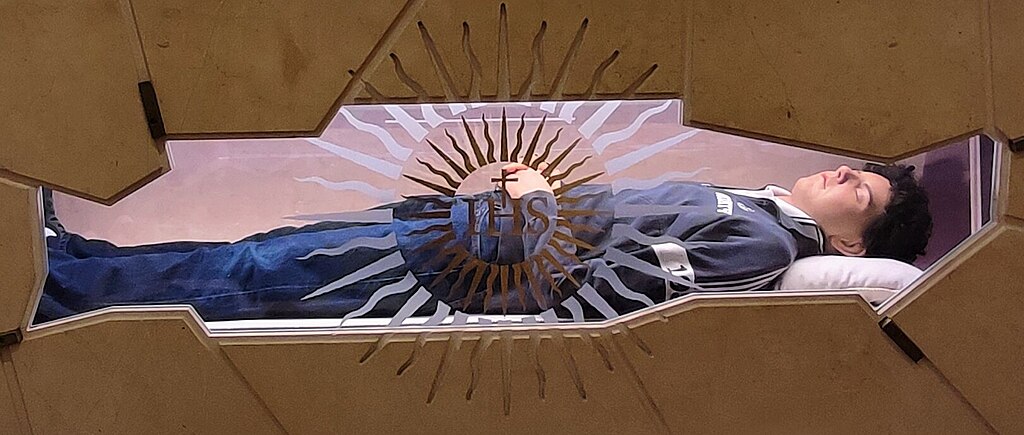France, in addition to having a beautiful country to explore, is also home to a number of different saints. Here are some of the saints of France and where to find them!
WHO: St. Bernadette
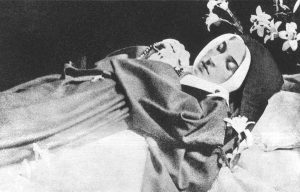
WHERE: Convent of St. Gildard
St. Bernadette is most well known for the Virgin Mary appearing to her in Lourdes, France, in 1858. Our Lady appeared to Bernadette many times, and the spring that formed during one of the apparitions still flows in Lourdes today. Many miraculous healings have taken place at this location, and pilgrims from around the world flock to the Sanctuary of Our Lady of Lourdes every year. St. Bernadette passed away in 1879 from tuberculosis and was canonized a saint in 1933. Despite dying in 1879, her body remains incorrupt.
You can see this miracle in the Convent of St. Gildard in Nevers, France.
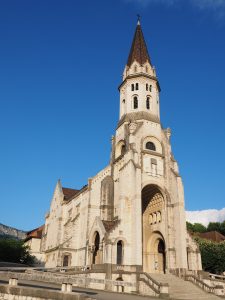
WHO: St. Francis de Sales
WHERE: Basilica of the Visitation
St. Francis was born in Switzerland and did much of his ministry during the Protestant reformation. He was ordained a priest and elected provost of the Diocese of Geneva in 1593. During his life, he converted 40,000 Calvinists to Catholicism, became the bishop of the Diocese of Geneva, and laid the groundwork for the Church’s teaching on the Universal Call to Holiness.
He died in 1622 and was canonized a saint in 1665, and his tomb is located in the Basilica of the Visitation in Annecy, France.
WHO: St. Catherine Laboure
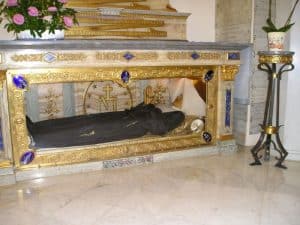
WHERE: Chapel of the Miraculous Medal
St. Catherine was born in 1806 and entered the Daughters of Charity in Paris, France, at a very young age. The Virgin Mary appeared to her three times in 1830; the second apparition Mary showed St. Catherine the Medal of the Immaculate Conception, now known as the Miraculous Medal, and told St. Catherine to have one made and spread devotion to the medal. She passed away in 1876, and her body remains incorrupt to this day.
You can see this miracle in the Chapel of the Miraculous Medal in Paris, France.
WHO: Bl. Basil Moreau
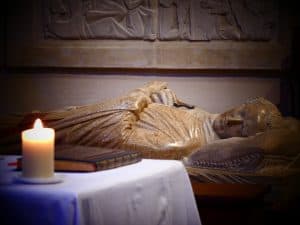
WHERE: Church of Our Lady of Holy Cross
Bl Basil Moreau was born in Le Mans, France, and is most well-known for founding the Congregation of Holy Cross. He modeled the congregation after the Holy family, consecrating the priests in the order to the Sacred Heart of Jesus, the brothers to the pure heart of St. Joseph, and the sisters to the Immaculate Heart of Mary.
His tomb lies in the Church of Our Lady of Holy Cross in Le Mans, France.
WHO: St. Therese of Lisieux
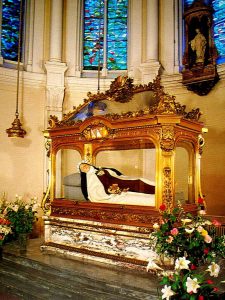
WHERE: Basilica of St. Therese of Liseux
St. Therese was born in France in 1873, and joined the Carmelite order at the age of 14. Normally they do not let women join the convent when they are that young, but St. Therese had a will of steel. When the superior of the Carmelite convent refused to let her join, she went to the bishop, who also said that she could not join. Therese was determined; soon after, her family went on pilgrimage to Rome and went to an audience with the Pope. Even though the family was forbidden to speak to the Pope, Therese spoke up and begged him to let her into the Carmelite convent. The Vicar general was impressed by Therese, and soon after she was admitted to the Carmelites.
She was known for her “little way” of making small daily sacrifices and performing small deeds with great love in order to achieve holiness. She passed away from illness at 24 years old, and her relics reside in the Basilica of St. Therese of Liseux.
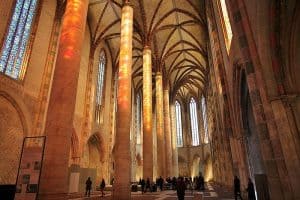
WHO: St. Thomas Aquinas
WHERE: Church of the Jacobins
St. Thomas Aquinas was a philosopher and theologian born around 1225 in Italy, and was one of the most influential thinkers of his time. He joined the Dominican Order and studied theology and philosophy; but at school, the other students thought him to be a “dumb ox” because he never said much. His mentor, Dominican Scholar Albertus Mangus, said, “You call him the dumb ox, but in his teaching, he will one day produce such a bellowing that it will be heard throughout the world.” Thomas went on to teach as well as write some of the most influential works of theology that are still used today, including the Summa Theologiae.
Thomas passed away in 1274, was canonized a saint in 1323, and was declared a Doctor of the Church. His remains are located in the Church of the Jacobins in Toulouse, France.
Curious about visiting the saints of France? Join us for one of these upcoming pilgrimages!


